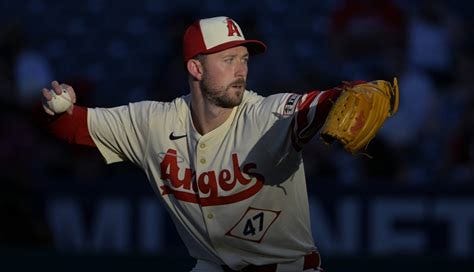It was a bit of a surprise when the Mets signed Griffin Canning on December 19. The terms – 1/$4.25 million – were not outrageous. Rather, what caught my interest was that they felt the need to make this type of move as early as they did. After a miserable 2024, it didn’t seem like the world would be beating a path to Canning’s door. Still, this is the type of signing we should give David Stearns the benefit of the doubt. Canning should be in the competition for the team’s sixth starter. And if he does not win that outright, he should be in the pen as a long man.
Before we get to the computer projections, there’s a new system available at FanGraphs entitled OOPSY. This new model includes inputs like Stuff+, barrels and Swing Speed, which the author attributes to why the system appears bolder at the extremes. It will be something to keep in mind when the projection pieces here start looking at the team’s stars. Anyway, here’s what the computer models have for Canning in 2025:
Marcel – 157 IP, 4.64 ERA, 1.318 WHIP, 8.0 K/9, 1.4 HR/9
OOPSY – 96 IP, 4.63 ERA, 1.34 WHIP, 7.25 K/9, 1.27 HR/9
Steamer – 98 IP, 4.07 ERA, 1.28 WHIP, 8.31 K/9, 1.30 HR/9
ZiPS – 140 IP, 5.01 ERA, 1.257 WHIP, 7.9 K/9, 1.5 HR/9
One of the challenges with forecasting Canning – which these models may or may not consider – is his role on the staff, which we broached in the initial graph. One of Canning’s pros is his ability to give innings, as he had 171.2 IP last year. While it’s unlikely that he’ll approach that total this season, it’s not something we should completely dismiss, either. If he does start some games, those outings are likely to be longer in length than, say, Adrian Houser’s last year.
Last season, Canning’s numbers fell across the board. But it’s hard not to notice the changes in K/9 and BB/9. In 2023, those numbers were 9.9 and 2.6, respectively. But last year, Canning’s K/9 fell to 6.8 and his BB/9 rose to 3.5 with his extra innings pitched. Perhaps in addition to thinking his staff can implement some mechanical change or change his repertoire, maybe there’s a belief Stearns that a reduced workload can help, too.
One of the things that plagued the 2024 Mets’ staff was their maddening tendency to issue walks. Mets pitchers combined for a 3.7 BB/9, which placed 28th in the majors. My expectation was that the club would make the ability to throw strikes a key component to any arms added to the staff. Canning and Clay Holmes should help some in this regard. Frankie Montas, eh, maybe not so much.
My opinion is that José Buttó should be first in line to be the club’s sixth starter. My expectation is that Canning will get more chances to start than will Butto. And who knows if Paul Blackburn will be healthy and if Tylor Megill can show some consistency. If either of those things come to pass, then that could influence the number of starts for Canning this year, too.
Considering that, it’s difficult for me to believe that Canning will log a ton of innings this year. The best-case scenario may be the 89.2 IP that Trevor Williams posted for the 2022 Mets. Of course, we would sign up for the numbers that Williams notched in ’22 for Canning in a New York minute. Here’s my totally biased forecast for Canning:
68 IP, 4.50 ERA, 1.275 WHIP, 8.5 K/9, 1.5 HR/9
Having offered these two players to the hex gods as sacrificial offerings, our next projection pieces will feature the team’s stars.





Seems that Canning is another potential low risk, medium to high reward, if the Mets and their pitching lab can guide him in the right direction. Other than that I have not liked anything about him being on the squad and despite is ability to give them innings, I don't see much upside. If the Mets can land one more strong bull pen piece, then Butto will get a chance to start. If they don't then he's going to have to serve that late innings get to Diaz role. While Tanner Scott will be expensive, why can't you have two guys who will play the closer role? Seems that all these pitchers struggle to go two days in a row and can't seem to toss more than an inning.
Goose Gossage must be laughing at how rand soft relief pitchers are since he pitched often and often pitched multiple innings. For a perspective on money, Gossage signed with the Yankees for $3.6 million over six years after becoming a free agent in 1977 and later signed a five-year, $9.95 million deal with the Padres in 1983, the largest contract awarded a relief pitcher at that point. Diaz makes more in one year than Gossage made in 11. It's almost criminal.
Canning signing was a surprise because he didn't perform well last year, he has a spotty career numbers and he hasn't any options. He is a SP6 in competition with Blackburn and Megill and he was the third best of the trio. With Manaea and Montas injures he has moved up in pecking order with his good spring and he initially secured a rotation spot.
85 IP, 4.90 ERA, 1.344 WHIP, 7.8 K/9, 1.6 HR/9